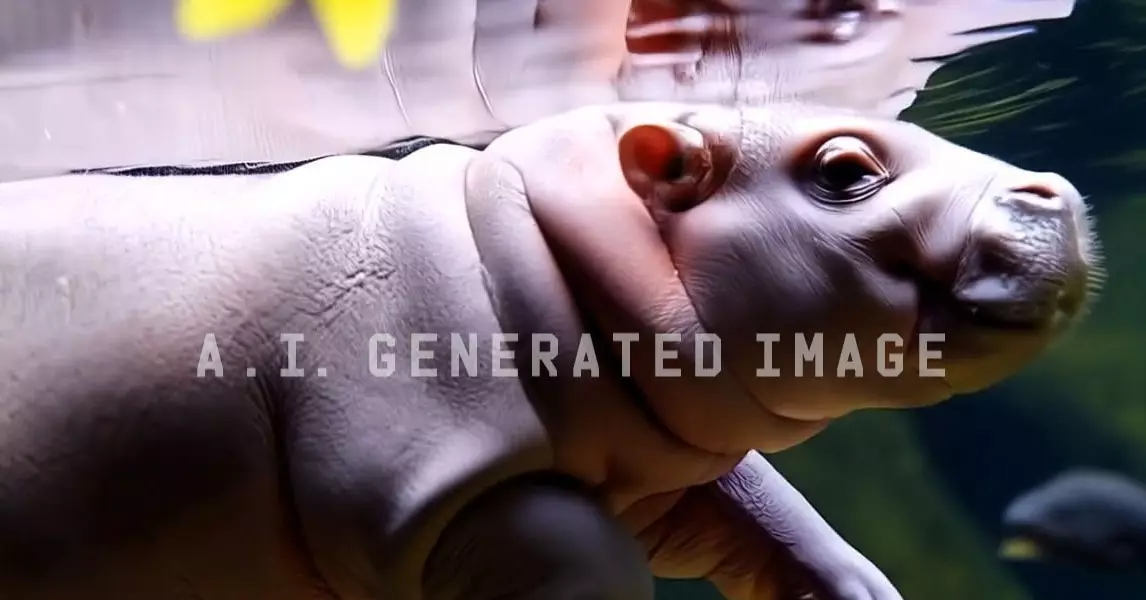Meta has recently unveiled an innovative media-centric artificial intelligence model named Movie Gen, which is poised to redefine how we create and interact with digital media. This AI tool claims the ability to generate realistic audiovisual content, allowing users to create engaging video clips and soundscapes from scratch. During its launch, Meta showcased several ten-second clips crafted with Movie Gen, including an adorable depiction of a baby hippo swimming, reminiscent of the viral Moo Deng content that captivated millions. While currently unavailable to the public, the announcement follows Meta Connect, a pivotal event highlighting fresh hardware and the latest iterations of Meta’s software, including the improvements in the Llama 3.2 language model.
One of the key features of Movie Gen lies in its powerful editing capabilities, enabling users to make intricate modifications to pre-existing video clips. This goes far beyond traditional video editing by allowing users to alter specific elements of a scene—such as adding objects to a character’s hands or changing the aesthetics of a setting. A notable example shared by Meta showcased a woman in a VR headset being transformed to appear as if she was wearing an elaborate pair of steampunk binoculars. Furthermore, Movie Gen’s versatility extends to audio as well, generating accompanying sound bites that enhanced the immersive experience of the generated visuals. In one of the showcased samples, the serene yet dynamic sounds of nature were intertwined with instrumental music, testifying to Movie Gen’s extensive auditory capabilities.
Digging deeper into the technical aspects of Movie Gen, the tool comprises two distinct models: Movie Gen Video, with a staggering 30 billion parameters, and Movie Gen Audio, comprising 13 billion parameters. An important note for context is that the parameter count indicates the model’s complexity and capability; for instance, Meta’s previous large model Llama 3.1 boasts 405 billion parameters. Movie Gen is capable of producing high-definition videos lasting up to 16 seconds while priding itself on outperforming competing models in terms of visual quality. This advancement not only signifies a leap in generative video technology but also positions Meta favorably within the emerging AI landscape dominated by other tech giants.
With any technological advancement, ethical considerations are paramount, particularly concerning the training data utilized for these models. Meta has revealed that Movie Gen was trained on a mixture of licensed and publicly available datasets, but has left specifics vague. This lack of transparency raises critical questions around the sources of the training data and the ethical implications of content scraping from the web. As generative AI continues to evolve, this issue surrounding data sourcing and copyright is increasingly contentious, with many questioning the fairness and legality of utilizing certain data sets. The clarity regarding what content contributes to training these models remains a grey area, and users should approach the capabilities of Movie Gen with a critical eye.
As anticipation grows over the broader availability of Movie Gen, its integration into Meta’s existing platforms such as Facebook, Instagram, and WhatsApp seems inevitable. Given Meta’s extensive reach and history in social media, harnessing the capabilities of Movie Gen could revolutionize user-generated content within these ecosystems. It’s also essential to note that while larger tech firms like Meta and OpenAI’s Sora have yet to fully launch their AI video tools, smaller startups like Runway are already offering experimental video AI solutions.
Movie Gen is a promising addition to the landscape of generative AI technologies, with its unique capabilities of both video and audio production. While the excitement surrounding its potential is palpable, critical scrutiny regarding its ethical implications and data sources must persist as we navigate this transformative era of digital content creation. With ongoing advancements, the future of media generation is bright yet fraught with challenges that require concerted efforts from industry leaders, consumers, and regulatory frameworks alike.

